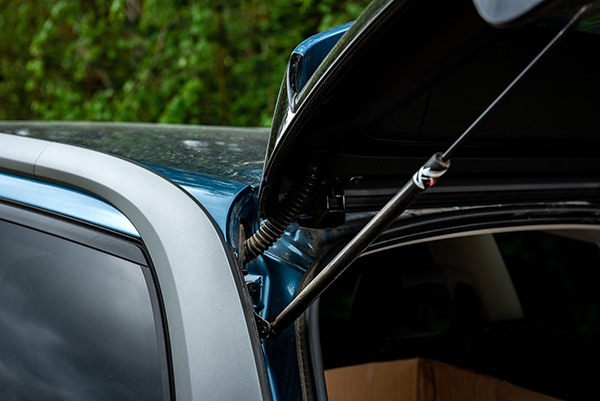
Few things are more frustrating than struggling to load your car’s trunk while the lid slams down unexpectedly. Not only is it inconvenient, but it can also be dangerous. So, why won’t your car’s trunk stay up? Let’s break down the most common reasons behind this issue and how you can address them.
The Role of Trunk Struts and Springs
The key components responsible for keeping your car’s trunk open are the trunk struts (sometimes called gas struts or lift supports) and, in some cases, torsion springs. These parts work together to counterbalance the weight of the trunk lid, making it easy to lift and ensuring it stays open. When they’re functioning correctly, you hardly notice them, but when they fail, the issue becomes immediately apparent.
Worn Out or Failing Struts
One of the most common reasons your trunk won’t stay up is that the struts have worn out. Trunk struts are filled with pressurized gas that provides the force necessary to hold up the trunk. Over time, the seals in these struts can deteriorate, causing the gas to leak out. This reduces the strut's ability to support the trunk lid’s weight, leading to it falling unexpectedly.
Signs that your trunk struts are failing include:
- The trunk lid doesn’t stay up as firmly as it used to.
- You need to hold the trunk open with your hand to prevent it from closing.
- The trunk lid feels heavier when you try to open it.
If you’re experiencing these issues, it’s likely time to replace the struts. The good news is that replacing trunk struts is generally a straightforward and affordable repair that can be done quickly.
Torsion Spring Issues
In some vehicles, particularly older models, torsion springs are used to help support the trunk lid. These springs are usually mounted across the width of the trunk and provide the necessary force to keep the lid open. However, like struts, torsion springs can lose their tension over time or even break entirely.
If your vehicle uses torsion springs, here are some signs of potential problems:
- The trunk lid doesn’t stay open, or it closes too quickly.
- You notice a lack of resistance when opening the trunk.
- You find a broken or disconnected spring in the trunk area.
Replacing a torsion spring can be more complex than replacing struts and requires professional assistance. It’s essential to ensure the replacement spring is installed correctly to avoid further issues.
Cold Weather Effects on Trunk Operation
Temperature changes can also play a role in why your trunk won’t stay up. Cold weather can cause the gas inside trunk struts to contract, reducing their effectiveness. This is why you might notice your trunk staying up just fine during the summer but failing during the winter.
If cold weather is affecting your trunk’s operation, you might consider replacing your struts with ones specifically designed to perform better in varying temperatures. Alternatively, a temporary fix might involve warming up the struts with a hairdryer or simply being more cautious when using the trunk in colder conditions.
Other Potential Issues
While trunk struts and springs are the most common culprits, other factors could also be at play:
- Hinges and Alignment: If the trunk’s hinges are misaligned or damaged, the lid may not open and close properly. This can put additional strain on the struts or springs, causing them to wear out faster.
- Weight of the Trunk Lid: If you’ve added aftermarket accessories or modifications to your trunk lid, such as a spoiler, the added weight might exceed the capacity of the existing struts or springs.
- Obstructions: Sometimes, debris or obstructions in the trunk’s hinge area can prevent the lid from staying up. Regularly check the trunk’s hinges and surrounding areas to ensure nothing is blocking its movement.
Preventing Future Issues
Regular maintenance and inspection can help prevent trunk issues from catching you off guard. Here are some tips to keep your trunk operating smoothly:
- Inspect Trunk Struts and Springs Regularly: Check your struts and springs periodically for signs of wear, such as oil leaks from the struts or rust on the springs.
- Keep Hinges Clean and Lubricated: Make sure the hinges are free from debris and are regularly lubricated to ensure smooth operation.
- Avoid Overloading the Trunk: Be mindful of adding extra weight to the trunk lid, as this can strain the struts and springs.
- Replace Parts When Needed: Don’t wait for a total failure to address issues. If you notice your trunk isn’t staying up as it should, take action early to avoid potential injuries or damage.
Is your trunk giving you trouble? Visit Sunny Service Center for fast and reliable trunk strut replacement. Keep your vehicle safe and functional with our expert services!